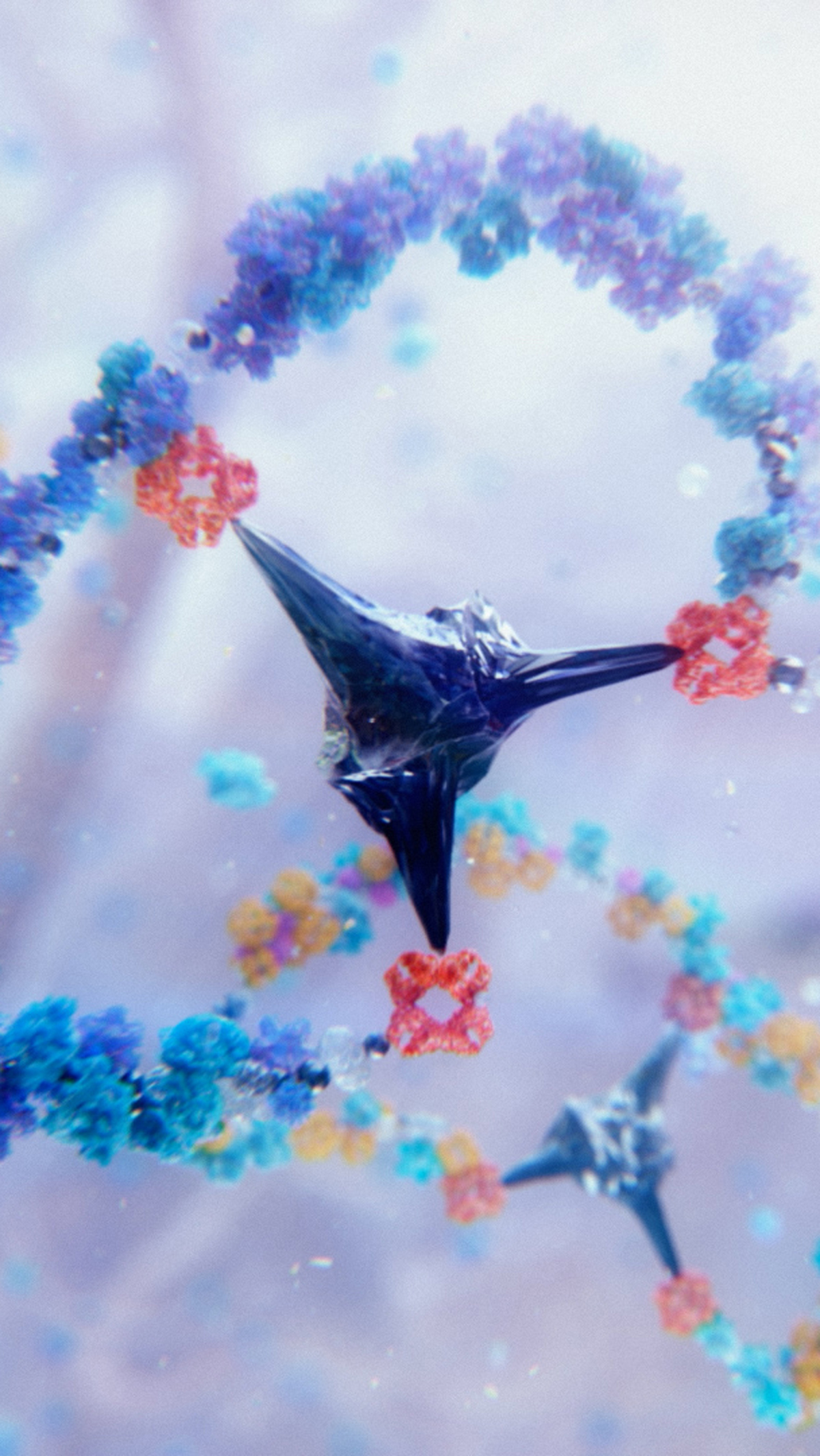

CNS + Neuromuscular
Overview
We entered into a collaboration with Ionis Pharmaceuticals in July 2021 to explore the development of nucleic acid therapeutics using our TfR1-based precision guidance technology.
This collaboration is exploring whether Bicycle® molecules can be conjugated to and deliver oligonucleotide therapeutics successfully into various tissues and deliver gene knockdown.
One of the most significant challenges in neuroscience is to deliver therapies and biologically active compounds across the blood brain barrier (BBB). This barrier, formed from endothelial tight junctions, makes it difficult for the majority of molecules, save for a subset of highly lipophilic small molecules, to enter the brain. One way to circumvent this is for molecules to be actively transported across the endothelial barrier by “piggybacking” on transporter receptors, whose role is to constitutively deliver a range of essential molecules into the brain.
Transferrin Receptor 1 (TfR1), one of the most studied transporter receptors, is the primary mechanism for transporting iron into the central nervous system (CNS). Bicycle Therapeutics has identified the first small molecules that can bind to the TfR1 transporter system and be transported across the BBB and released into the brain. TfR1 is one of a number of known CNS transporters, many of which are potentially also targetable using Bicycle’s technology and is an area of focus.
This ability to deliver into the CNS, coupled with the ability to conjugate Bicycle® peptides to a range of payloads, unlocks multiple therapeutic opportunities. We have shown in pre-clinical models that we can use this conjugated system to deliver a number of diverse otherwise peripherally restricted therapeutic cargos into the CNS and that these cargos elicit pharmacodynamic activity in the brain. Here Bicycle is developing a portfolio of potential therapies based on this ability to conjugate and deliver into the CNS.
In collaboration with our partner Ionis, we have shown in mouse models that we can use this CNS delivery to elicit gene knockdown through attaching antisense oligonucleotides (ASO). This builds on earlier work in pre-clinical models where Ionis was able to use the same TfR1 delivery system to deliver ASO and siRNAs to skeletal muscle and cardiac muscle to knock down genes involved in neuromuscular disease and cardiovascular disease.
Bicycle peptides, as one of the smallest known CNS delivery modalities (~2 kilodaltons, or kDa), potentially provide significant advantage over older technologies, largely based on much larger biologics (~50-150 kDa), because they minimise the ratio of delivery system compared to payload. This could lead to significant advantages, especially when considering the dose of any future therapy based on these technologies.
Bicycle is engaged in building on the TfR1 model to investigate additional applications of the TfR1 technology to deliver other potential modalities and alternative therapeutic payloads. Bicycle is also researching alternative delivery systems, based on alternative targets, to deliver to other tissues and organs beyond muscle and the CNS in a specific targeted manner.

